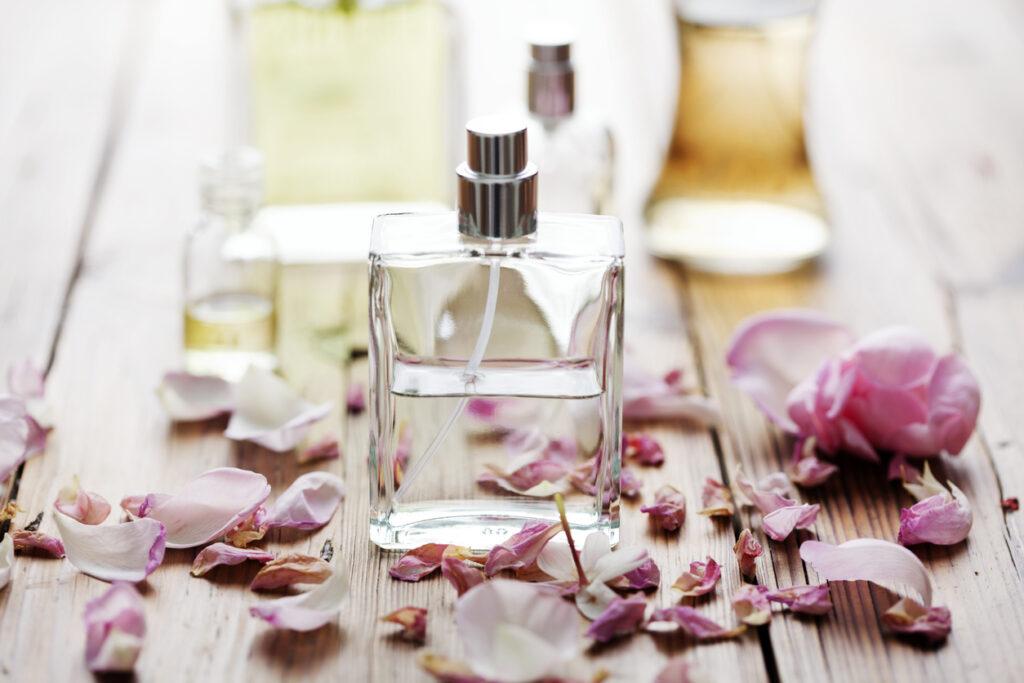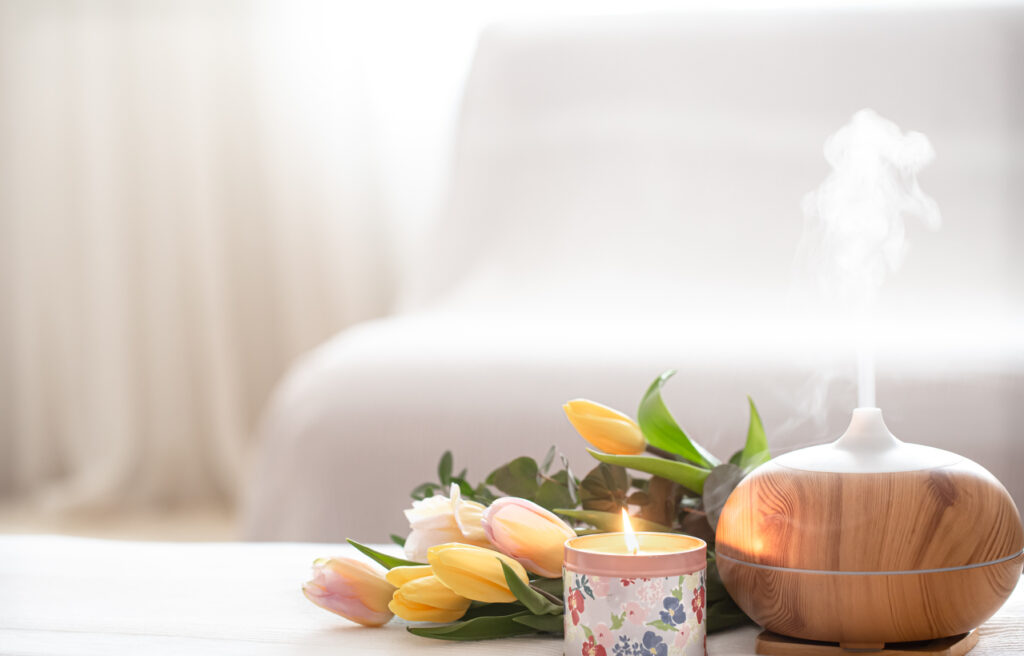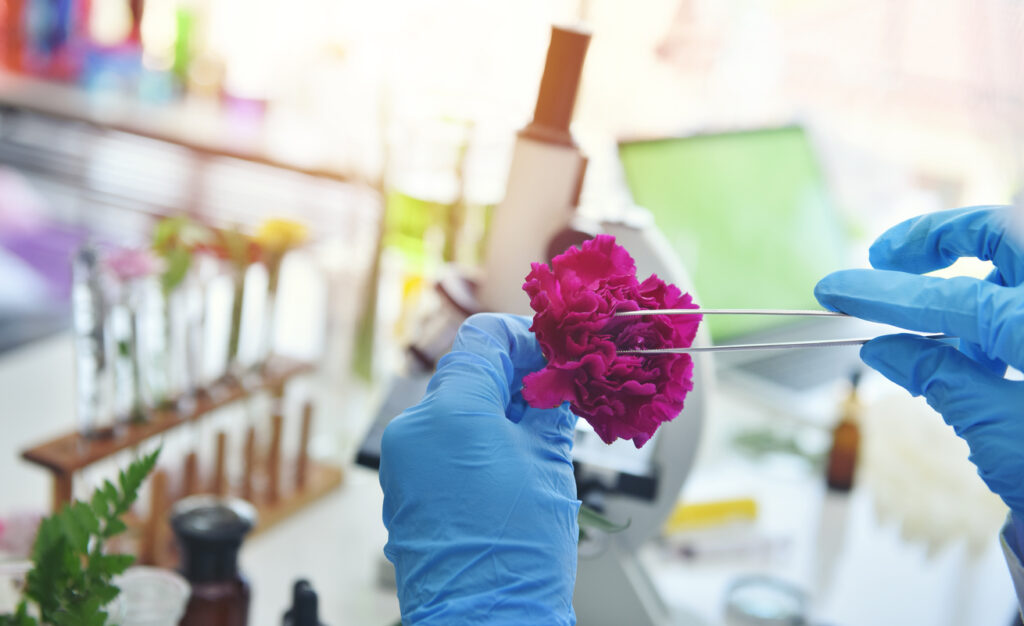According to an NPD Group report – published in January 2022 – fragrance outperformed all other personal care categories in 2021, with sales up by 49% on the previous year. But this boom is not limited to perfumes and fine fragrances. Fragrance is also a top purchasing factor for products in the personal care and household care industries.
However, the demand for consistent and appealing scents is proving challenging for fragrance manufacturers. Climate change poses a significant threat to natural flower and plant sources, such as citrus, that would usually be used for perfume scents. The terrains and climates that were previously well-suited to growing the desired flowers are now at risk of sudden, dramatic weather events, with higher temperatures also impacting the ingredient quality and aroma.
For high-end brands that pride themselves on exclusivity and consistency, this is causing considerable problems. When customers purchase perfumes which have carved a legacy in the personal care market, many do so to feel that they are wearing the same scent as close family members or favourite Hollywood stars. They want to have something that links them to loved ones or makes them feel more glamorous. Any change in smell or ingredient would harm this perception. It is therefore unsurprising that there has been significant resistance to the incorporation of synthetic raw materials into traditional fine fragrance formulations.

Despite the opposition from fine fragrance houses, there are a growing number of companies incorporating biotechnology into their processes to overcome these supply challenges and meet customer demand.
This blog will explore how recent geopolitical events have impacted consumer behaviour in fragrance, and how biotechnological advancements are paving the way for a more sustainable fragrance future.
Well-being Focused
Throughout the pandemic, self-care saw a huge boom, with a larger proportion of the population than ever before taking an active role in their mental and physical behaviour to promote well-being and stress management. After months of isolation in continued lockdowns and years of uncertainty, the desire to feel close to nature and replicate the comfort and freedom of fresh air was felt by many. It is here where fragrance became a powerful tool.
Scent is heavily linked to emotions and memories. That is because smells are managed by the olfactory bulb. This neural structure sends signals directly to the limbic system, which contains regions that relate to emotion and memory. During the pandemic, consumers were gravitating towards fragrances that expressed cleanliness and protection, as well as fruity, floral and gourmand notes that channelled feelings of comfort and nostalgia.
During such trying times, finding methods to enhance moods and connect with those we couldn’t physically be around was a priority. Scents were able to bring that relief to many. And as the world emerged from the series of lockdowns, spending in the fragrance sector only continued to thrive.

The Synthetic (or-not-so-synthetic) Revolution
With demands for ‘natural’, and sustainable scents reaching new heights, and climate change making it harder than ever for manufacturers to meet this demand, the industry is turning to alternative methods. Biotechnology offers a robust and increasingly cost-effective solution to consistency concerns, as well as providing a sustainable substitute to traditional ‘natural’ ingredients by eradicating the requirement of land (and thus deforestation) to grow certain crops. This is favoured by many customers who want to ensure that their preferred perfume will be available for years to come and won’t have a large carbon footprint attached to it.
Companies have begun partnering with biotechnology firms to manufacture scents and flavours using fermented microbes. This process utilises enzymes to convert common starting materials (sugar) into a variety of scent molecules. For example, when yeast grows and ferments sugar in a microbrewery, it makes plant enzymes that convert sugar into fragrance molecules which can then be purified from the yeast. By including fermentation-driven ingredients, fragrance manufacturers can avoid the use of completely synthetic materials, hence retaining the ‘natural’ label, whilst minimising supply chain issues due to climate change, inconsistent harvest quality, or even political unrest.
Some perfumers are going one step further and delving into the production of chemically driven synthetic scents. With the capability to be mass-produced at a low cost, a greater guarantee of scent longevity – and the opportunity for manufacturers to experiment with different chemical combinations to create unique perfumes – synthetic scents offer a plethora of advantages. Coumarin is a synthetic fragrance that can be included in a formula to add the scents of almonds, marzipan, and vanilla, as well as hazelnut and tobacco notes when diluted. With all these scent possibilities from one ingredient, it is hardly surprising that many fragrance brands have taken to applying it in their formulas, particularly in men’s perfumes.
Fragrance ‘bloom’ technology is also revolutionising the fragrance industry, with many manufacturers turning to this novel method of scent enhancement. ‘Bloom’ is when the addition of water to a product initiates a build-up of fragrance intensity. This is often found in personal care products such as shampoos, shower gels, and deodorants, allowing customers to experience heightened fragrances when they need them most.

Despite the many advantages technology offers the industry, it is important to recognise the challenges that arise when using synthetic scents. White florals – such as jasmine – contain indoles, and their synthetic analogues have been known to give off an unpleasant odour. As such, it can be a struggle for formulators to strike the correct balance when recreating them synthetically. Additionally, many established fragrance houses have been using natural floral scents for many years, and pride themselves on this. In France, there are even fields where the jasmine flowers used to make fine fragrances have been grown for decades – fields that could soon be under threat by climate change.
Getting these high-end perfume houses to change their ways, or even convince consumers that this is the right path to take, could be challenging. A lot of consumers demand ‘natural’ scents and are unwilling to come around to the idea of synthetic perfumes. But changing attitudes towards synthetic ingredients is crucial to driving the move towards biotechnology and ultimately guaranteeing the longevity of the industry.
The Role of Fragrance at Home
The importance of scent extends beyond fine fragrance. A return to busier lifestyles and living in close quarters with others has meant that malodour control is more important than ever, particularly when it comes to household smells. Scent is often applied to functional household care or personal care products, either to mask the base odour of a formula or to boost the quality perception of a product by manipulating human psychology. For example, a strong ‘medicinal’ or citrusy smell may not be particularly pleasant. But for many, it has links with cleanliness and therefore signals that a product is therapeutic or of high quality, building a positive perception. Alternatively, if a product is meant to be for sensitive skin, an overwhelming scent will reduce trust in the product.

Scent can be the sole driver of customer purchase for products like soap and shampoo, overriding the actual quality of the product. No matter how visually appealing or high performing a cleansing soap or moisturiser is, if the product does not have an appropriate fragrance, it can negatively influence quality perception and chase away potential customers. Functional products are immediately deemed more sophisticated when a scent is added. It enhances the customer’s experience, and many are willing to spend more money on a product. This is exemplified in the candle business – a scented candle holds much greater value in comparison to an unscented one.
Fragrance can also be used in the home to unify products of a particular company and generate a unique brand. This is known as olfactory branding. By developing a signature scent, companies can form a unique and emotional connection with customers – when customers smell that particular scent, they will immediately think of a particular brand or product. This branding strategy can be exemplified by Hyatt Place, a hotel chain that applies its signature scent of fresh blueberries and light florals on a base of warm vanilla and musk to hundreds of its hotels across the U.S. Since adopting this method, customers reported that the scent enhanced the memorability of the hotel brand.
The Progression of Perfume

Fragrance is a multifaceted tool used by companies to evoke customer emotions, portray certain perceptions, and generate a memorable brand. However, in recent years the traditional methods of creating such scents have been altered by many manufacturers to mitigate volatile external influences, most prominently climate change. This has grown in importance as the fragrance industry faces increasing demands from customers for sustainable products that promote well-being – trends largely attributed to a shift in focus during the COVID lockdowns.
Many fine fragrances and other perfumed personal care products are a combination of essential oils and/or other scents. And more often than not, a combination of both synthetic and natural fragrances will be used to achieve the desired scent. However, meeting the customer’s demand by producing a desirable scent is only half the battle. Consumers are now, more than ever, demanding transparency when it comes to the ingredient list and sustainability of the products they purchase. It is therefore crucial that manufacturers turning to these novel methods tell customers the percentage of renewable origin notes in each scent.
With the emergence of biotechnology, synthetic scents, and an open mindset towards adapting manufacturing processes, the fragrance landscape holds the potential for continued growth and longevity. The future of fragrance is an exciting one!